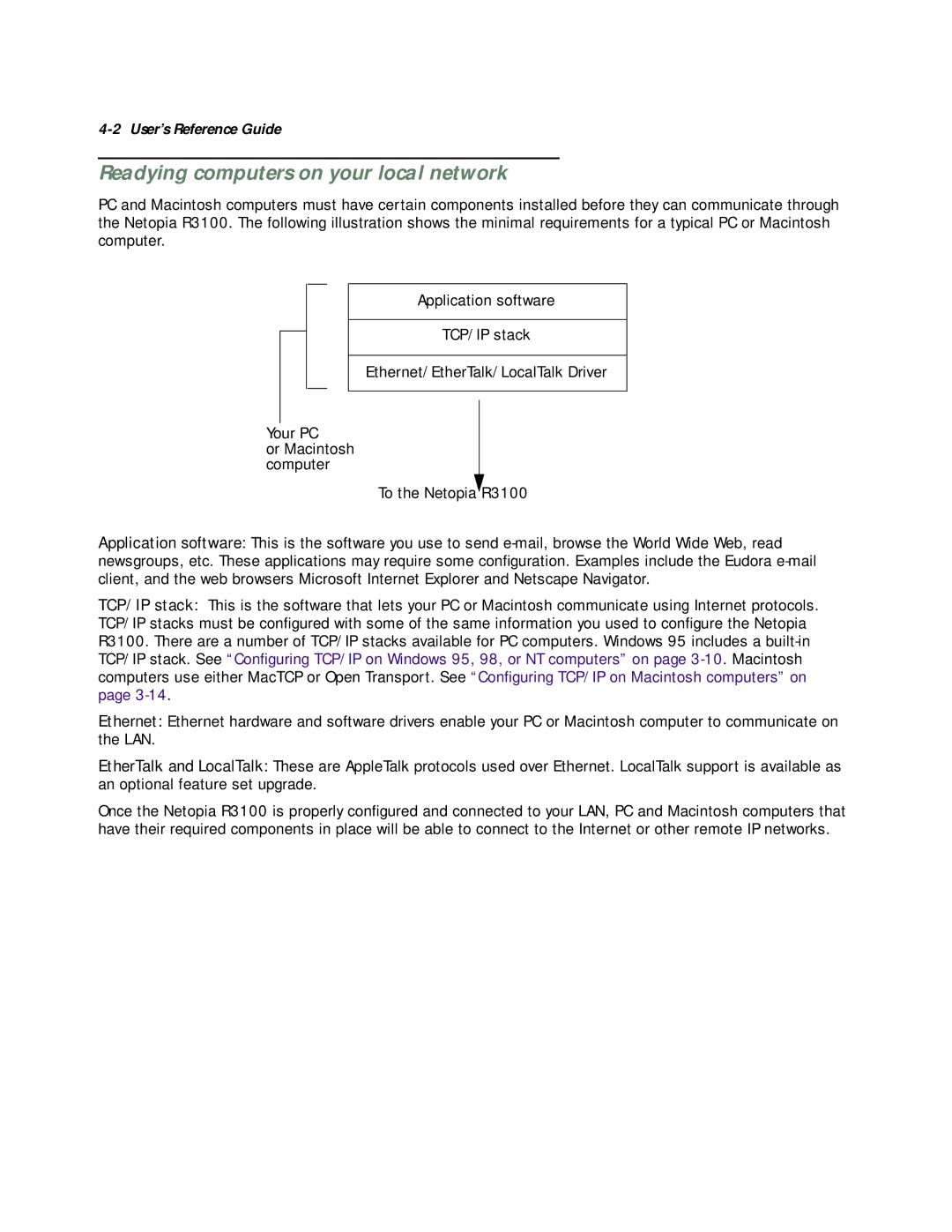
4-2 User’s Reference Guide
Readying computers on your local network
PC and Macintosh computers must have certain components installed before they can communicate through the Netopia R3100. The following illustration shows the minimal requirements for a typical PC or Macintosh computer.
Application software
TCP/IP stack
Ethernet/EtherTalk/LocalTalk Driver
Your PC
or Macintosh computer
To the Netopia R3100
Application software: This is the software you use to send
TCP/IP stack: This is the software that lets your PC or Macintosh communicate using Internet protocols. TCP/IP stacks must be configured with some of the same information you used to configure the Netopia R3100. There are a number of TCP/IP stacks available for PC computers. Windows 95 includes a
Ethernet: Ethernet hardware and software drivers enable your PC or Macintosh computer to communicate on the LAN.
EtherTalk and LocalTalk: These are AppleTalk protocols used over Ethernet. LocalTalk support is available as an optional feature set upgrade.
Once the Netopia R3100 is properly configured and connected to your LAN, PC and Macintosh computers that have their required components in place will be able to connect to the Internet or other remote IP networks.
